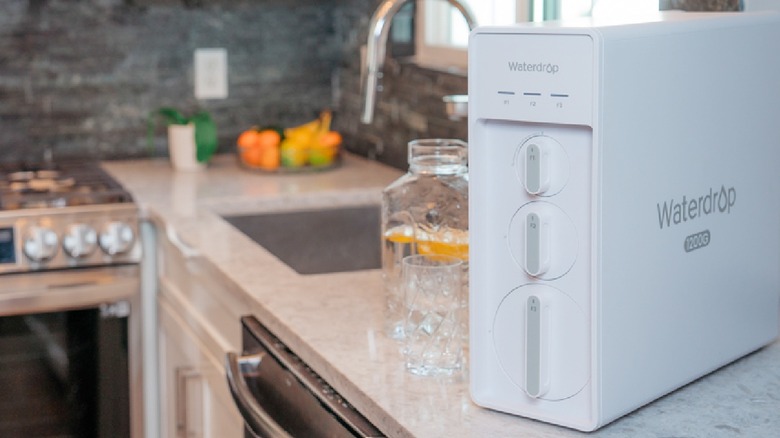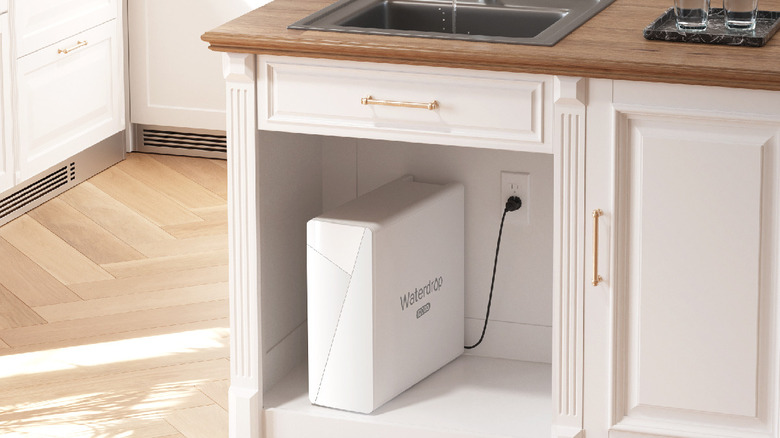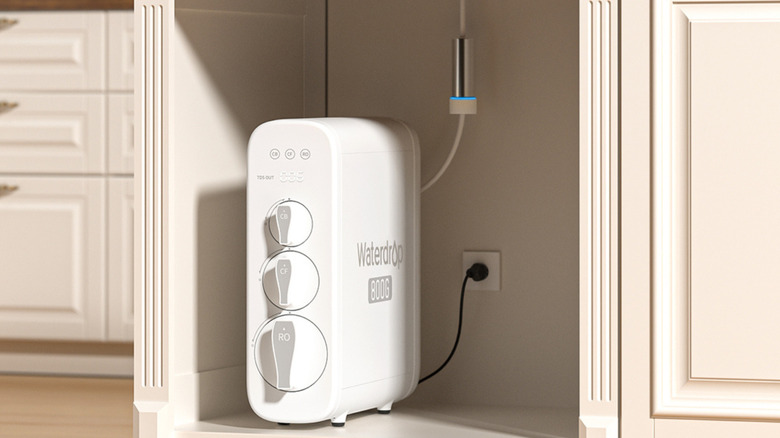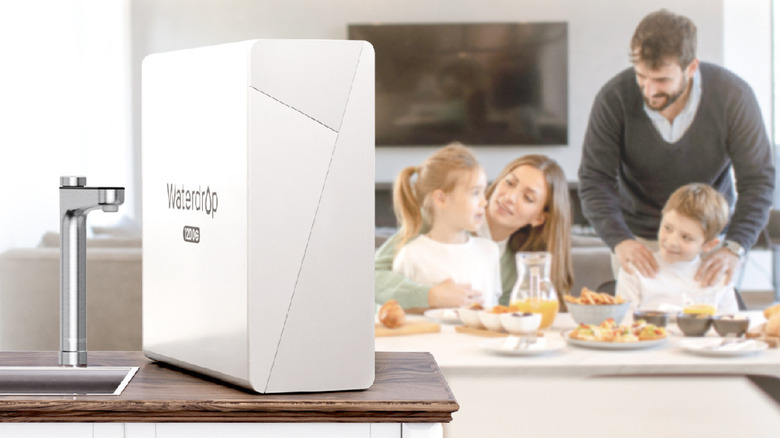A Deep Dive Into Waterdrop Filter RO Systems: Features, Benefits, And Comparisons
As people become more conscious of the health hazards in their food and drinks, water filtration has grown in popularity. Although water treatment plants work hard to keep our drinking water clean, the unfortunate reality is that the end result isn't as clear and free of hazardous materials as many of us would like. Some people choose to drink bottled water instead of tap water to circumnavigate the problem, but bottled water isn't that much better for you since plastic bottles can transfer microplastics into their contents. Water filtration is a safe and effective way to make sure there are no surprises in what you're drinking.
One popular method of water filtration for home use is reverse osmosis. At a basic level, reverse osmosis works by running your tap water through a series of filters and can eliminate up to 99% of common impurities and dangerous contaminants. It is one of the most efficient and effective ways to remove potential microplastics, bacteria, viruses, forever chemicals, and other harmful substances hiding in your water.
And helping lead the way in reverse osmosis filtration technology is Waterdrop. Waterdrop Filter Reverse Osmosis (RO) Systems enjoy several key features which make them a prime candidate for anyone looking to take their water quality seriously. One of the best features of Waterdrop Filter RO Systems is that they're tankless, making them a functional and convenient addition to your home.
Tank vs tankless RO Systems: Which is right for you?
Reverse osmosis has achieved a major technological milestone in recent years. Traditionally, RO systems worked by filling a small water tank with clean water which was then drawn from whenever you went to fill your glass. These tank RO systems were fairly effective but they have some unfortunate downsides which will be easier to understand if we talk about why the tank was necessary in the first place.
You see, older RO systems have a relatively small flow rate which means water moves through the various filters at a sluggish pace. By using the water tank, the equipment could passively retain a small amount of clean water which you could quickly draw from at any time. But if you needed more water than was available in the tank you would either need to wait for the tank to fill back up or wait patiently as the system slowly worked new water through the filter. The other major downside was that water would often taste stale if it sat in the water tank for too long, or the tank has been used for excessive filtration.
Tankless RO systems, such as the one from Waterdrop Filter, don't need water tanks because they enjoy a high enough flow rate to pump the water directly from your faucet through the filter whenever you need it. This gets rid of the stale taste people notice with a water tank and it severely reduces the amount of storage space needed below your sink.
A closer look at Waterdrop RO Systems
The Waterdrop Filter X Series is the company's most advanced series of reverse osmosis water filters. There are two machines in the series, the X16 and the X12, which are differentiated primarily by their flow rates. The X16 has a flow rate of 1,600 gallons per day (GPD) while the X12 has a flow rate of 1,200 GPD. Compare that to the typical flow rate of 50 to 75 GPD for tank RO systems and you should get a sense of just how much faster tankless RO systems are. In more practical terms, the X16 can fill a 6-ounce glass in just two seconds and the X12 can fill it in three seconds. The most popular Waterdrop Filter system is the G3P800 which has a flow rate of 800 GPD (six seconds for a 6-ounce glass). And if you're looking for the perfect filter for a coffee and tea enthusiast or an office break room or lobby, the Waterdrop Filter K6 offers a specialized instant hot water feature.
With so much water pumping through the system, you might imagine there's a lot of wastewater being produced but luckily that's not the case. A typical RO system will produce around five gallons of wastewater for every one gallon of clean water (also known as the permeate). That seems incredibly inefficient compared to most Waterdrop Filter RO Systems, including the X Series and the G3P800, which produce three gallons of clean drinking water for every one gallon of wastewater.
Why Waterdrop is the ultimate water filter
There are many long term benefits to using Waterdrop Filter RO Systems in your home, making it an investment worth considering. The X16 model is priced at $2,000 which is a substantial upfront cost. You can bring that down to $1,300 with the X12 or $1,000 for the G3P800, but they both have a slower flow rate. There are upkeep costs to consider as well. Each system uses three different filters with varying lifespans, that range from $30 to $160.
That's a lot of money to be spending on water, but staying healthy means less medical bills which helps justify the cost. Also, because of how efficient Waterdrop Filter RO Systems are, you'll be saving money on water costs compared to other filtration systems.
The choice of water filtration is ultimately up to you since only you can determine which features are most relevant to your situation. But if you're ready to ensure the water you're consuming every day is of the highest quality, Waterdrop Filter is a reliable brand with innovative technology and an ethos for sustainability. If the health of your family is a primary concern, Waterdrop Filter RO Systems are certainly up to the task.



